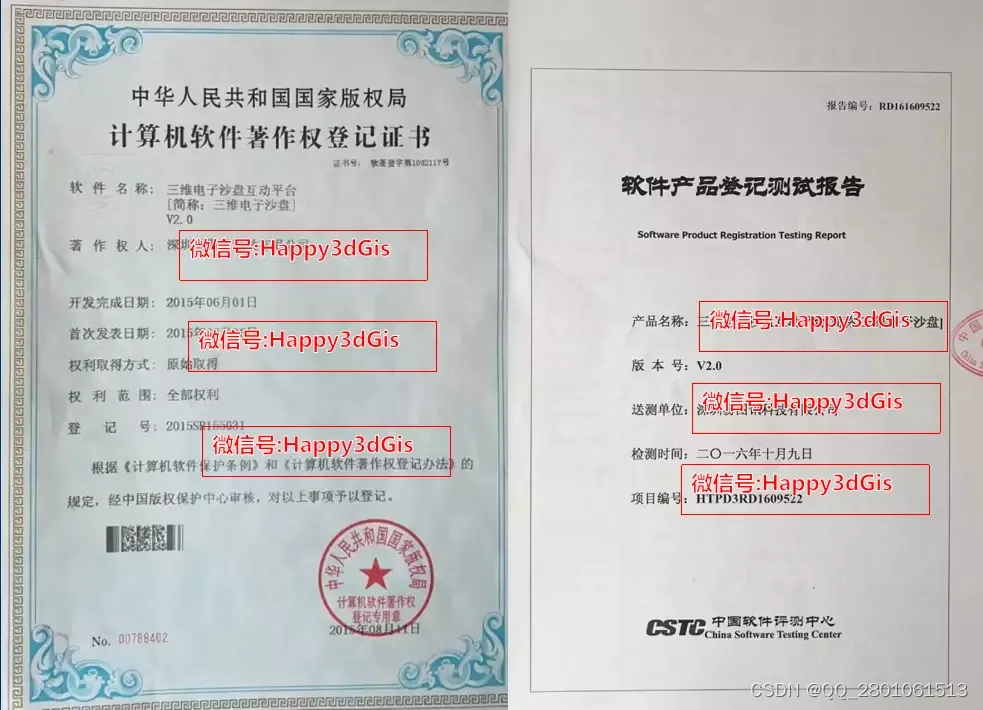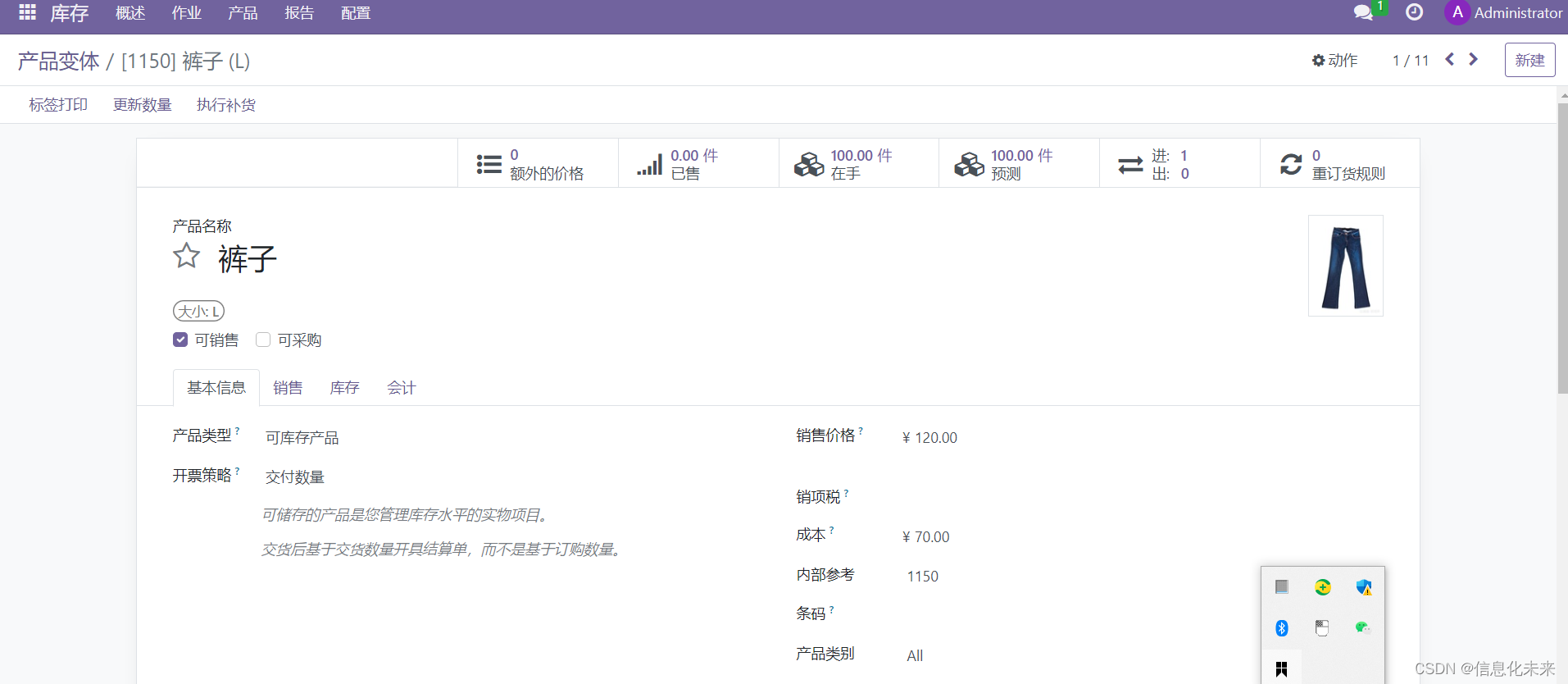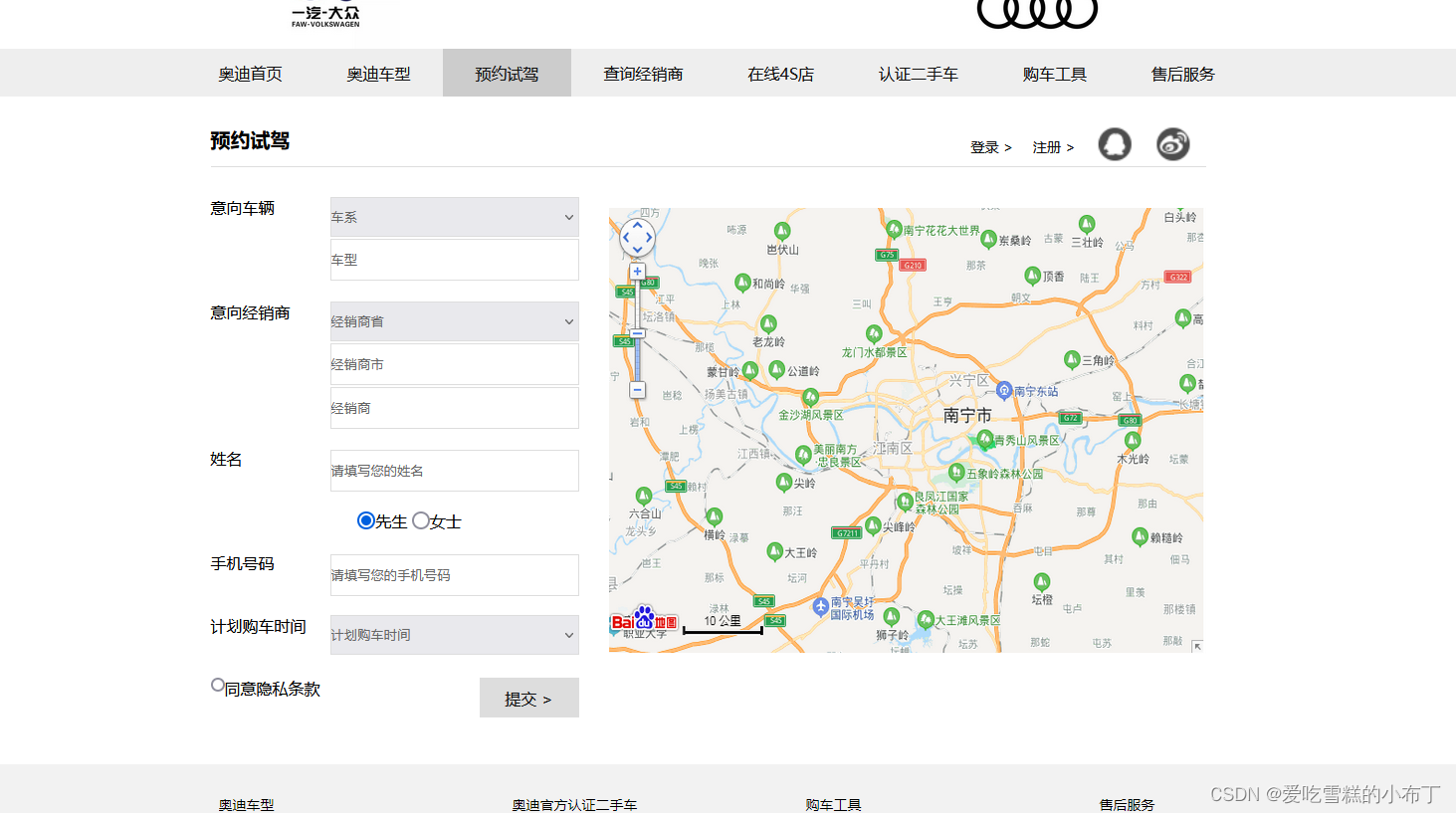聚合操作概述
聚合操作允许用户处理多个文档并返回计算结果。聚合操作组值来自多个文档,可以对分组数据执行各种操作以返回单个结果。
聚合操作包含三类:单一作用聚合、聚合管道、MapReduce。
- 单一作用聚合
提供了对常见聚合过程的简单访问,操作都从单个集合聚合文档。MongoDB 提供 db.collection.estimatedDocumentCount()、db.collection.countDocument()、db.collection.distinct()这类单一作用的聚合函数。 所有这些操作都聚合来自单个集合的文档。虽然这些操作提供了对公共聚合过程的简单访问,但它们缺乏聚合管道和 map-Reduce 的灵活性和功能。
- 聚合管道
是一个数据聚合的框架,模型基于数据处理流水线的概念。文档进入多级管道,将文档转换为聚合结果。
- MapReduce
操作具有两个阶段:处理每个文档并向每个输入文档发射一个或多个对象的 map 阶段,以及 reduce 组合 map 操作的输出阶段。从 MongoDB 5.0 开始,map-reduce 操作已被弃用。聚合管道比 map-reduce 操作提供更好的性能和可用性。
MongoDB 6.0 在原有聚合功能的基础上,推出了如下新特性以及优化项:
- 分片集群实例支持 $lookup 和 $graphLookup。
- 改进 $lookup 对 JOINS 的支持。
- 改进 $graphLookup 对图遍历的支持。
- 提升 $lookup 性能,部分场景中性能提升可达百倍。
聚合管道
MongoDB 聚合框架(Aggregation Framework)是一个计算框架,它可以:
- 作用在一个或几个集合上;
- 对集合中的数据进行的一系列运算;
- 将这些数据转化为期望的形式;
从效果而言,聚合框架相当于 SQL 查询中的 GROUP BY、 LEFT OUTER JOIN 、 AS 等。
管道(Pipeline)和阶段(Stage)
整个聚合运算过程称为管道(Pipeline),它是由多个阶段(Stage)组成的, 每个管道:
- 接受一系列文档(原始数据);
- 每个阶段对这些文档进行一系列运算;
- 结果文档输出给下一个阶段;
通过将多个操作符组合到聚合管道中,用户可以构建出足够复杂的数据处理管道以提取数据并进行分析。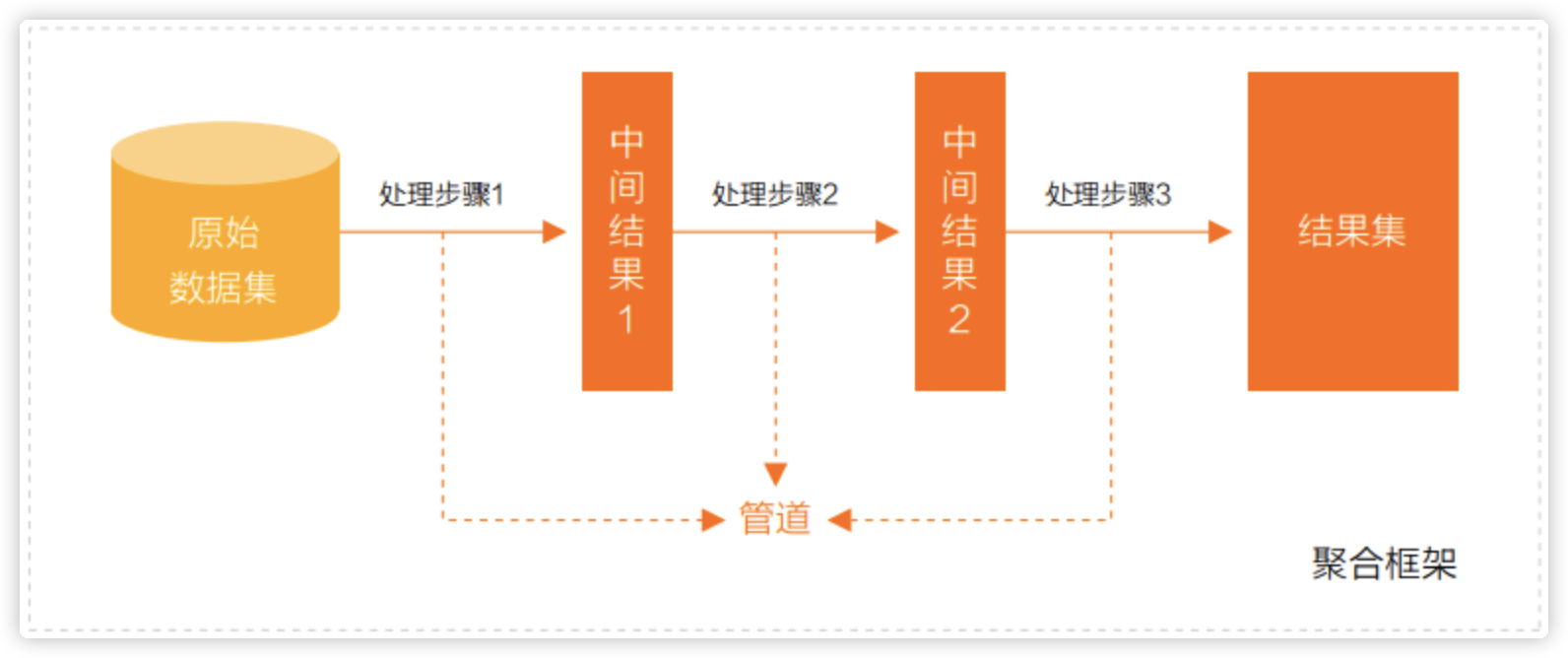
聚合管道操作语法:
pipeline = [$stage1, $stage2, ...$stageN];
db.collection.aggregate(pipeline, {options})
- pipelines
组数聚合阶段。除 o u t 、 out、 out、Merge 和 $geonear 阶段之外,每个阶段都可以在管道中出现多次。
- options
可选,聚合操作的其他参数。包含:查询计划、是否使用临时文件、 游标、最大操作时间、读写策略、强制索引等等。
图示说明: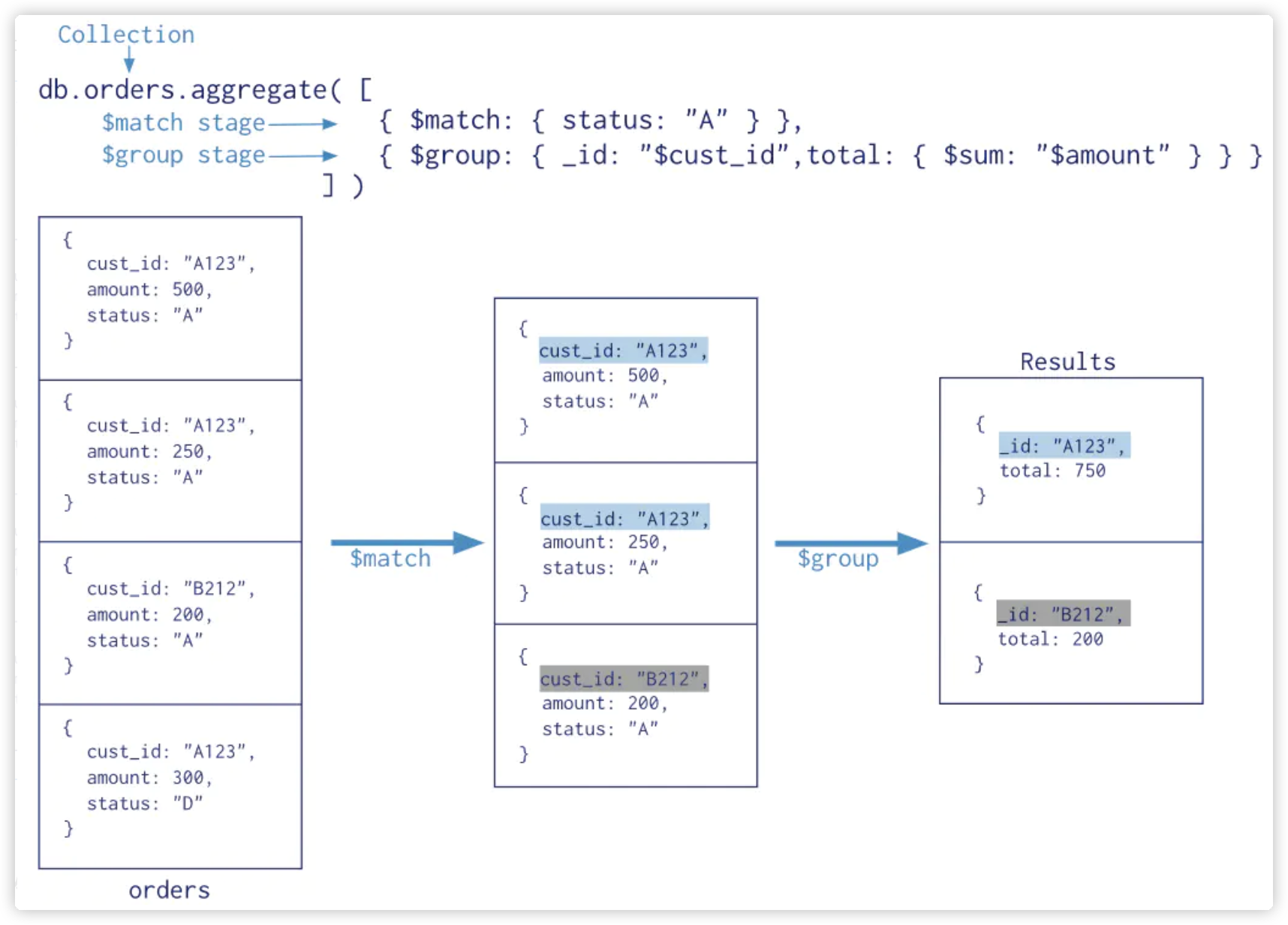
常用的聚合阶段运算符
聚合管道包含非常丰富的聚合阶段,下面是最常用的聚合阶段。
| 阶段运算符 | 描述 | SQL等价运算符 |
|---|---|---|
| $match | 筛选条件 | WHERE |
| $project | 投影 | AS |
| $lookup | 左外连接 | LEFT OUTER JOIN |
| $sort | 排序 | ORDER BY |
| $group | 分组 | GROUP BY |
| s k i p / skip/ skip/limit | 分页 | |
| $unwind | 展开数组 | |
| $graphLookup | 图搜索 | |
| f a c e t / facet/ facet/bucket | 分面搜索 |
参考文档:https://www.mongodb.com/docs/manual/reference/operator/aggregation-pipeline/
聚合表达式:
# 获取字段信息
$<field> :用 $ 指示字段路径
$<field>.<sub field> :使用 $ 和 . 来指示内嵌文档的路径
常量表达式:
$literal :<value> :指示常量 <value>
系统变量表达式:
$$<variable> 使用 $$ 指示系统变量
$$CURRENT 指示管道中当前操作的文档
测试数据脚本:
var tags = ["nosql","mongodb","document","developer","popular"];
var types = ["technology","sociality","travel","novel","literature"];
var books=[];
for(var i=0;i<50;i++){var typeIdx = Math.floor(Math.random()*types.length);var tagIdx = Math.floor(Math.random()*tags.length);var tagIdx2 = Math.floor(Math.random()*tags.length);var favCount = Math.floor(Math.random()*100);var username = "xx00"+Math.floor(Math.random()*10);var age = 20 + Math.floor(Math.random()*15);var book = {title: "book-"+i,type: types[typeIdx],tag: [tags[tagIdx],tags[tagIdx2]],favCount: favCount,author: {name:username,age:age}};books.push(book)
}
db.books.insertMany(books);
SQL to Aggregation Mapping Chart:https://www.mongodb.com/docs/manual/reference/sql-aggregation-comparison/
下面详细说明。
$project
投影操作, 将原始字段投影成指定名称, 如将集合中的 title 投影成 name:
db.books.aggregate([{$project:{name:"$title"}}])
$project 可以灵活控制输出文档的格式,也可以剔除不需要的字段:
db.books.aggregate([{$project:{name:"$title",_id:0,type:1,author:1}}])
从嵌套文档中排除字段:
db.books.aggregate([{$project:{name:"$title",_id:0,type:1,"author.name":1}}
])
或者
db.books.aggregate([{$project:{name:"$title",_id:0,type:1,author:{name:1}}}
])
$match
m a t c h 用于对文档进行筛选,之后可以在得到的文档子集上做聚合, match 用于对文档进行筛选,之后可以在得到的文档子集上做聚合, match用于对文档进行筛选,之后可以在得到的文档子集上做聚合,match 可以使用除了地理空间之外的所有常规查询操作符,在实际应用中尽可能将 $match 放在管道的前面位置。这样有两个好处:一是可以快速将不需要的文档过滤掉,以减少管道的工作量;二是如果在投射和分组之前执行 $match,查询可以使用索引。
db.books.aggregate([{$match:{type:"technology"}}])
筛选管道操作和其他管道操作配合时候时,尽量放到开始阶段,这样可以减少后续管道操作符要操作的文档数,提升效率。
db.books.aggregate([{$match:{type:"technology"}},{$project:{name:"$title",_id:0,type:1,author:{name:1}}}
])
$count
计数并返回与查询匹配的结果数。
db.books.aggregate([{$match:{type:"technology"}},{$count: "type_count"}
])
说明:
m a t c h 阶段筛选出 t y p e 匹配 t e c h n o l o g y 的文档,并传到下一阶段; < b r / > match 阶段筛选出 type 匹配 technology 的文档,并传到下一阶段;<br /> match阶段筛选出type匹配technology的文档,并传到下一阶段;<br/>count 阶段返回聚合管道中剩余文档的计数,并将该值分配给 type_count;
$group
按指定的表达式对文档进行分组,并将每个不同分组的文档输出到下一个阶段。输出文档包含一个 _id 字段,该字段按键包含不同的组。
输出文档还可以包含计算字段,该字段保存由 $group 的 _id 字段分组的一些 accumulator 表达式的值。 $group不会输出具体的文档而只是统计信息。
{ $group: { _id: <expression>, <field1>: { <accumulator1> : <expression1> }, ... } }
_id 字段是必填的。但是,可以指定 _id 值为 null 来为整个输入文档计算累计值。
剩余的计算字段是可选的,并使用 运算符进行计算。
_id 和 表达式可以接受任何有效的表达式。
accumulator 操作符:
| 名称 | 描述 | 类比sql |
|---|---|---|
| $avg | 计算均值。 | avg |
| $first | 返回每组第一个文档,如果有排序,按照排序,如果没有按照默认的存储的顺序的第一个文档。 | limit 0,1 |
| $last | 返回每组最后一个文档,如果有排序,按照排序,如果没有按照默认的存储的顺序的最后个文档。 | - |
| $max | 根据分组,获取集合中所有文档对应值得最大值。 | max |
| $min | 根据分组,获取集合中所有文档对应值得最小值。 | min |
| $push | 将指定的表达式的值添加到一个数组中。 | - |
| $addToSet | 将表达式的值添加到一个集合中(无重复值,无序)。 | - |
| $sum | 计算总和。 | sum |
| $stdDevPop | 返回输入值的总体标准偏差(population standard deviation)。 | - |
| $stdDevSamp | 返回输入值的样本标准偏差(the sample standard deviation)。 | - |
g r o u p 阶段的内存限制为 100 M 。默认情况下,如果 s t a g e 超过此限制, group 阶段的内存限制为 100M。默认情况下,如果 stage 超过此限制, group阶段的内存限制为100M。默认情况下,如果stage超过此限制,group 将产生错误。但是,要允许处理大型数据集,请将 allowDiskUse 选项设置为 true 以启用 $group 操作以写入临时文件。
book 的数量,收藏总数和平均值:
db.books.aggregate([{$group:{_id:null,count:{$sum:1},pop:{$sum:"$favCount"},avg:{$avg:"$favCount"}}}
])
统计每个作者的 book 收藏总数:
db.books.aggregate([{$group:{_id:"$author.name",pop:{$sum:"$favCount"}}}
])
统计每个作者的每本 book 的收藏数:
db.books.aggregate([{$group:{_id:{name:"$author.name",title:"$title"},pop:{$sum:"$favCount"}}}
])
每个作者的 book 的 type 合集:
db.books.aggregate([{$group:{_id:"$author.name",types:{$addToSet:"$type"}}}
])
$unwind
可以将数组拆分为单独的文档。
v3.2+ 支持如下语法:
{$unwind:{# 要指定字段路径,在字段名称前加上$符并用引号括起来。path: <field path>,# 可选,一个新字段的名称用于存放元素的数组索引。该名称不能以$开头。includeArrayIndex: <string>, # 可选,default: false,若为true,如果路径为空,缺少或为空数组,则$unwind输出文档preserveNullAndEmptyArrays: <boolean> } }
姓名为 xx006 的作者的 book 的 tag 数组拆分为多个文档:
db.books.aggregate([{$match:{"author.name":"xx006"}},{$unwind:"$tag"}
])db.books.aggregate([{$match:{"author.name":"xx006"}}
])
每个作者的 book 的 tag 合集:
db.books.aggregate([{$unwind:"$tag"},{$group:{_id:"$author.name",types:{$addToSet:"$tag"}}}
])
案例
示例数据:
db.books.insert([
{"title" : "book-51","type" : "technology","favCount" : 11,"tag":[],"author" : {"name" : "firechou","age" : 28}
},{"title" : "book-52","type" : "technology","favCount" : 15,"author" : {"name" : "firechou","age" : 28}
},{"title" : "book-53","type" : "technology","tag" : ["nosql","document"],"favCount" : 20,"author" : {"name" : "firechou","age" : 28}
}])
测试:
# 使用includeArrayIndex选项来输出数组元素的数组索引
db.books.aggregate([{$match:{"author.name":"firechou"}},{$unwind:{path:"$tag", includeArrayIndex: "arrayIndex"}}
])
# 使用preserveNullAndEmptyArrays选项在输出中包含缺少size字段,null或空数组的文档
db.books.aggregate([{$match:{"author.name":"firechou"}},{$unwind:{path:"$tag", preserveNullAndEmptyArrays: true}}
])
$limit
限制传递到管道中下一阶段的文档数。
db.books.aggregate([{$limit : 5 }
])
此操作仅返回管道传递给它的前 5 个文档。 $limit 对其传递的文档内容没有影响。
注意:当 $sort 在管道中的 l i m i t 之前立即出现时, limit 之前立即出现时, limit之前立即出现时,sort 操作只会在过程中维持前 n 个结果,其中 n 是指定的限制,而 MongoDB 只需要将 n 个项存储在内存中。
$skip
跳过进入 stage 的指定数量的文档,并将其余文档传递到管道中的下一个阶段。
db.books.aggregate([{$skip : 5 }
])
此操作将跳过管道传递给它的前 5 个文档。 $skip 对沿着管道传递的文档的内容没有影响。
$sort
对所有输入文档进行排序,并按排序顺序将它们返回到管道。
{ $sort: { <field1>: <sort order>, <field2>: <sort order> ... } }
要对字段进行排序,请将排序顺序设置为 1 或 -1,以分别指定升序或降序排序,如下例所示:
db.books.aggregate([{$sort : {favCount:-1,"author.age":1}}
])
$lookup
MongoDB 3.2 版本新增,主要用来实现多表关联查询,相当关系型数据库中多表关联查询。每个输入待处理的文档,经过 $lookup 阶段的处理,输出的新文档中会包含一个新生成的数组(可根据需要命名新 key )。数组列存放的数据是来自被 Join 集合的适配文档,如果没有,集合为空(即 为[ ])。
语法:
db.collection.aggregate([{$lookup: {from: "<collection to join>",localField: "<field from the input documents>",foreignField: "<field from the documents of the from collection>",as: "<output array field>"}})
参数说明:
| from | 同一个数据库下等待被 Join 的集合。 |
|---|---|
| localField | 源集合中的 match 值,如果输入的集合中,某文档没有 localField 这个Key(Field),在处理的过程中,会默认为此文档含有 localField:null 的键值对。 |
| foreignField | 待 Join 的集合的 match 值,如果待 Join 的集合中,文档没有 foreignField 值,在处理的过程中,会默认为此文档含有 foreignField:null 的键值对。 |
| as | 为输出文档的新增值命名。如果输入的集合中已存在该值,则会覆盖掉。 |
注意:null = null 此为真。
其语法功能类似于下面的伪 SQL 语句:
SELECT *, <output array field>
FROM collection
WHERE <output array field> IN (SELECT *FROM <collection to join>WHERE <foreignField>= <collection.localField>);
案例
数据准备:
db.customer.insert({customerCode:1,name:"customer1",phone:"13112345678",address:"test1"})
db.customer.insert({customerCode:2,name:"customer2",phone:"13112345679",address:"test2"})db.order.insert({orderId:1,orderCode:"order001",customerCode:1,price:200})
db.order.insert({orderId:2,orderCode:"order002",customerCode:2,price:400})db.orderItem.insert({itemId:1,productName:"apples",qutity:2,orderId:1})
db.orderItem.insert({itemId:2,productName:"oranges",qutity:2,orderId:1})
db.orderItem.insert({itemId:3,productName:"mangoes",qutity:2,orderId:1})
db.orderItem.insert({itemId:4,productName:"apples",qutity:2,orderId:2})
db.orderItem.insert({itemId:5,productName:"oranges",qutity:2,orderId:2})
db.orderItem.insert({itemId:6,productName:"mangoes",qutity:2,orderId:2})
关联查询:
db.customer.aggregate([ {$lookup: {from: "order",localField: "customerCode",foreignField: "customerCode",as: "customerOrder"}}
])db.order.aggregate([{$lookup: {from: "customer",localField: "customerCode",foreignField: "customerCode",as: "curstomer"}},{$lookup: {from: "orderItem",localField: "orderId",foreignField: "orderId",as: "orderItem"}}
])
聚合操作案例 1
统计每个分类的 book 文档数量:
db.books.aggregate([{$group:{_id:"$type",total:{$sum:1}}},{$sort:{total:-1}}
])
标签的热度排行,标签的热度则按其关联 book 文档的收藏数(favCount)来计算:
db.books.aggregate([{$match:{favCount:{$gt:0}}},{$unwind:"$tag"},{$group:{_id:"$tag",total:{$sum:"$favCount"}}},{$sort:{total:-1}}
])
说明:
$match 阶段:用于过滤 favCount=0 的文档。
$unwind 阶段:用于将标签数组进行展开,这样一个包含 3 个标签的文档会被拆解为 3 个条目。
g r o u p 阶段:对拆解后的文档进行分组计算, ‘ group 阶段:对拆解后的文档进行分组计算,` group阶段:对拆解后的文档进行分组计算,‘sum:“$favCount”`表示按 favCount 字段进行累加。
$sort 阶段:接收分组计算的输出,按 total 得分进行排序。
统计 book 文档收藏数 [0,10),[10,60),[60,80),[80,100),[100,+∞):
db.books.aggregate([{$bucket:{groupBy:"$favCount",boundaries:[0,10,60,80,100],default:"other",output:{"count":{$sum:1}}}
}])
聚合操作案例 2
导入邮政编码数据集
数据地址:https://media.mongodb.org/zips.json
下载完成后,使用 mongoimport 工具导入数据:
mongoimport -h 192.168.65.174 -d test -u firechou -p firechou --authenticationDatabase=admin -c zips --file /user/local/mongodb/import/zips.json
h,–host:代表远程连接的数据库地址,默认连接本地 Mongo 数据库;
–port:代表远程连接的数据库的端口,默认连接的远程端口 27017;
-u,–username:代表连接远程数据库的账号,如果设置数据库的认证,需要指定用户账号;
-p,–password:代表连接数据库的账号对应的密码;
-d,–db:代表连接的数据库;
-c,–collection:代表连接数据库中的集合;
-f, --fields:代表导入集合中的字段;
–type:代表导入的文件类型,包括 csv 和 json, tsv 文件,默认 json 格式;
–file:导入的文件名称;
–headerline:导入 csv 文件时,指明第一行是列名,不需要导入;
返回人口超过 1000 万的州:
db.zips.aggregate( [{ $group: { _id: "$state", totalPop: { $sum: "$pop" } } },{ $match: { totalPop: { $gte: 10*1000*1000 } } }
] )
这个聚合操作的等价 SQL 是:
SELECT state, SUM(pop) AS totalPop
FROM zips
GROUP BY state
HAVING totalPop >= (10*1000*1000)
返回各州平均城市人口:
db.zips.aggregate( [{ $group: { _id: { state: "$state", city: "$city" }, cityPop: { $sum: "$pop" } } },{ $group: { _id: "$_id.state", avgCityPop: { $avg: "$cityPop" } } }
] )
按州返回最大和最小的城市:
db.zips.aggregate( [{ $group:{_id: { state: "$state", city: "$city" },pop: { $sum: "$pop" }}},{ $sort: { pop: 1 } },{ $group:{_id : "$_id.state",biggestCity: { $last: "$_id.city" },biggestPop: { $last: "$pop" },smallestCity: { $first: "$_id.city" },smallestPop: { $first: "$pop" }}},{ $project:{ _id: 0,state: "$_id",biggestCity: { name: "$biggestCity", pop: "$biggestPop" },smallestCity: { name: "$smallestCity", pop: "$smallestPop" }}}
] )
聚合优化
https://www.mongodb.com/docs/manual/core/aggregation-pipeline-optimization/
聚合优化的三大目标:
- 尽可能利用索引完成搜索和排序
- 尽早尽多减少数据量
- 尽可能减少执行步骤

执行顺序
m a t c h / match/ match/sort vs p r o j e c t / project/ project/addFields:
为了使查询能够命中索引, m a t c h / match/ match/sort 步骤需要在最前面,该原则适用于 MongoDB <= 3.4。MongoDB 3.6 开始具备一定的自动优化能力。
$project + s k i p / skip/ skip/limit:
s k i p / skip/ skip/limit 应该尽可能放在 $project 之前,减少 $project 的工作量。3.6 开始自动完成这个优化。
内存排序
在没有索引支持的情况下,MongoDB 最多只支持使用 100MB 内存进行排序。假设总共可用内存为 16GB,一个请求最多可以使用 100MB 内存排序,总共可以有 16000 / 100 = 160 个请求同时执行。
内存排序消耗的不仅是内存,还有大量CPU。
方案一:$sort + $limit
只排Top N ,只要 N 条记录总和不超过 100MB 即可。
方案二:{allowDiskUse: true}
使用磁盘作为交换空间完成全量,超出 100MB 部分与磁盘交换排序。
方案三:索引排序
使用索引完成排序,没有内存限制。

